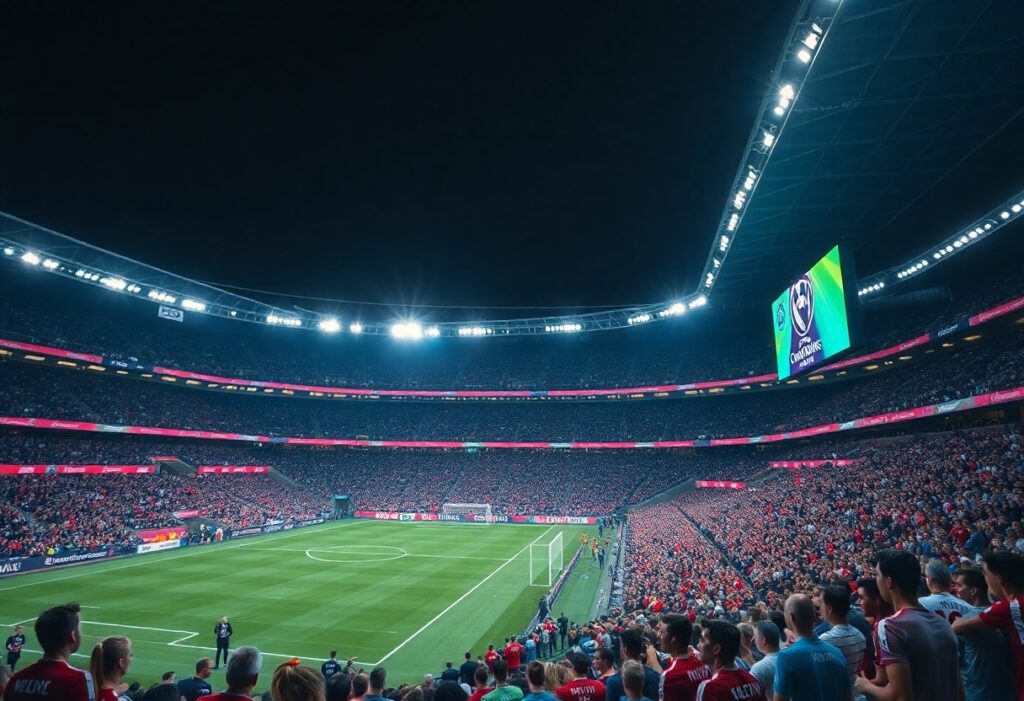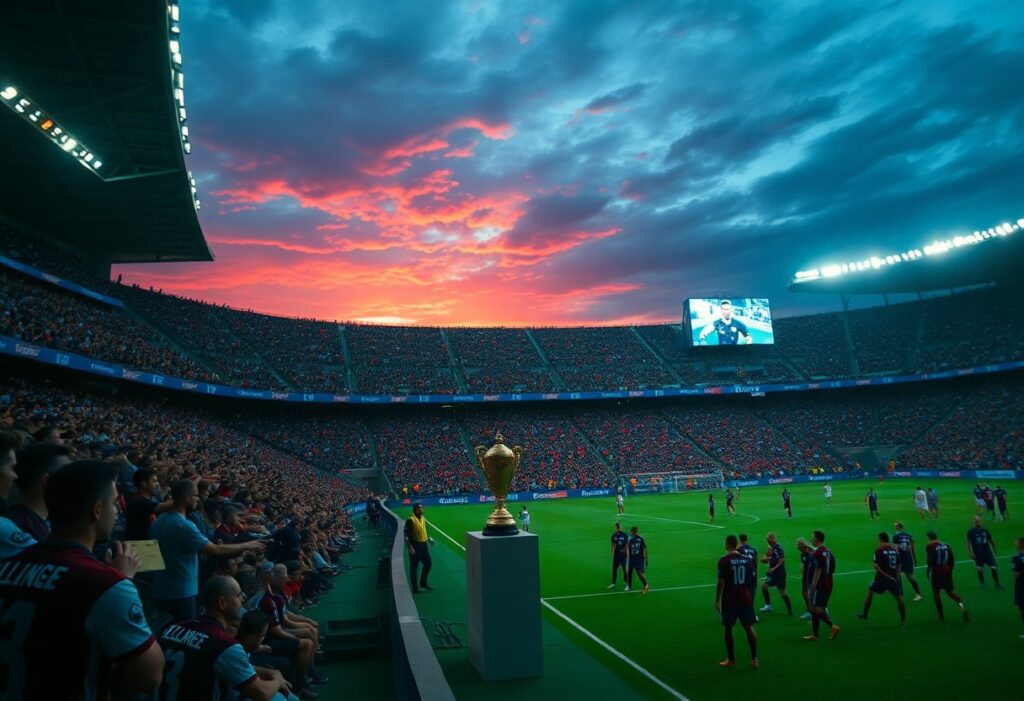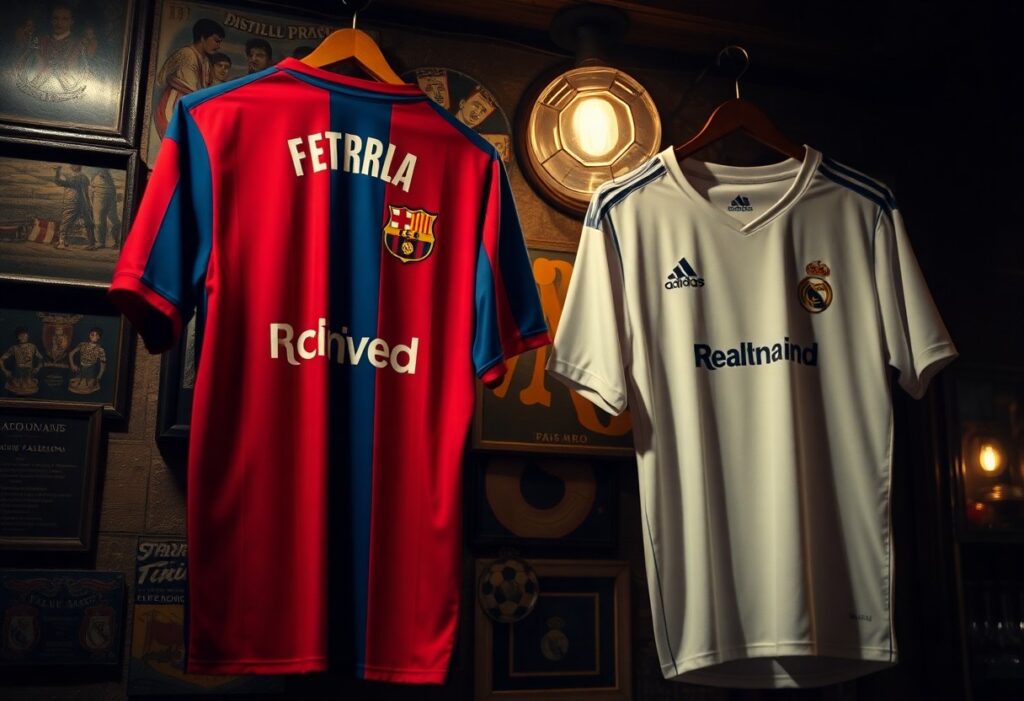
You may not realize how the Champions League has transformed European football into a global phenomenon. Established in 1955, this elite tournament elevated the competition among clubs, driving financial investments and enhancing talent recruitment. Its impact on commercial revenues and broadcast audiences has redefined club strategies, fostering a culture of continuous improvement. As clubs strive for European glory, the tournament’s significance extends beyond the pitch, influencing player careers and national leagues alike, ultimately shaping the landscape of modern football.
The Origins of the Champions League
Founded in 1955 as the European Cup, the competition aimed to bring together the continent’s best clubs for a knockout tournament. The inaugural season featured just 16 teams, with the legendary Real Madrid claiming victory by defeating Stade de Reims. This early format emphasized club prestige and set the stage for football’s burgeoning popularity in Europe, drawing massive crowds and rapidly increasing viewership.
Transition from European Cup to Champions League
The transition from the European Cup to the Champions League in 1992 marked a significant evolution in the format and structure of the competition. UEFA aimed to enhance commercial appeal, inviting teams based not only on performance but also on their marketability. This shift introduced the group stage format, allowing more matches and greater participation. The 1992–93 season saw the newly branded Champions League inaugurated, with Olympique de Marseille winning the first title.
Transforming the competition into the UEFA Champions League was pivotal for its global reach. The group stage format, featuring 32 teams split into eight groups, was designed to generate exposure and revenue. Television rights and sponsorship deals surged, making it one of the most lucrative tournaments worldwide. This transformation allowed clubs to capitalize on increased fan engagement and commercial opportunities, moving beyond purely sporting merit to create a vibrant and lucrative industry surrounding European football.
Impact on European Football Culture
The Champions League has transformed European football culture, reinforcing a sense of shared identity among fans. This elite competition showcases the best of football, bringing together diverse supporters and creating traditions that transcend national borders. For instance, the UEFA Champions League anthem has become iconic, uniting fans in stadiums across Europe, fostering a collective passion that elevates the experience of club football and reinforces the sense of belonging among supporters.
Fan Engagement and Identity
Fans form a vital part of the Champions League, with their unwavering loyalty driving engagement and investment in their clubs. Unique rituals such as pre-match gatherings and coordinated displays in stadiums amplify the atmosphere, strengthening the emotional connection between clubs and their supporters. Iconic moments like last-minute goals or historic comebacks become shared narratives, further cementing fans’ identities and allegiance to their clubs and the competition itself.
Economic Influence on Clubs
The financial implications of the Champions League ripple through European football, influencing club operations and player acquisitions. Participation can lead to significant windfalls, with clubs earning millions from broadcasting rights and sponsorship deals. This revenue allows teams to invest in talent and infrastructure, creating a competitive landscape where well-funded clubs can dominate while others struggle to keep pace.
In the 2021-2022 season, clubs participating in the Champions League collectively earned approximately €2.5 billion in revenue, substantially enhancing their financial capabilities. This influx has led to notable disparities, with elite clubs securing top talent to maintain dominance, while smaller clubs face challenges in competing. The reliance on Champions League revenue has created a cycle where clubs must consistently qualify to sustain their financial health, intensifying pressure on management and players alike. Successful campaigns can shift a club’s trajectory, fostering ambitions that resonate throughout the European football hierarchy.
Tactical Evolution in the Champions League
The Champions League has been a catalyst for tactical evolution, compelling teams to adapt to the highest competitive standards in European football. The introduction of sophisticated pressing systems, fluid formations, and tactical versatility has dominated matches. Coaches like Jürgen Klopp and Pep Guardiola have redefined styles, emphasizing high-energy play and positional interchange, which has influenced domestic leagues and club strategies across Europe.
Coaching Innovations
Innovations in coaching have proliferated through the Champions League, as managers experiment with advanced methodologies to gain an edge. The competition has fostered an environment of shared learning, where tactics like the “false nine” or expansive build-up play have been effectively showcased by teams seeking to outmaneuver their opponents, ultimately shaping how football is approached on and off the pitch.
Player Development and Scouting
Player development and scouting practices have evolved significantly, with clubs investing heavily in identifying talent through extensive data analysis and scouting networks. The Champions League acts as a stage to reveal emerging stars, pushing clubs to refine their strategies and integrate youth prospects into first-team setups for the high-pressure environment.
Player scouting has become increasingly data-driven, with clubs utilizing advanced analytics to identify potential talent at younger ages. Initiatives such as tracking player performances across various leagues help clubs pinpoint skills and adaptability suitable for Champions League competition. This has led to the emergence of players like Erling Haaland and Jadon Sancho, whose pathways highlight the importance of effective scouting blending timely recruitment with developmental opportunities. The ability to seamlessly transition young talent into high-stakes environments is now a benchmark for success among elite clubs.
The Champions League’s Role in Globalization
International Audience and Broadcast Rights
The Champions League has carved out a massive international audience, with broadcasts reaching over 200 countries and more than 400 million viewers per matchday. As clubs vie for global recognition, the lucrative broadcast rights generate billions, with an estimated value of over €3 billion annually. This financial windfall not only enhances club revenues but also elevates the tournament’s status, making it the pinnacle of club football worldwide.
Influence on Non-European Clubs
Non-European clubs increasingly aspire to emulate the success of their European counterparts in the Champions League. The tournament’s global profile has inspired teams from regions such as South America and Asia to invest heavily in talent and infrastructure, aiming to reach similar heights. Clubs like Al Ahly from Egypt and Palmeiras in Brazil have begun to align their strategies to compete on the same stage, forging partnerships and enhancing their visibility.
Several non-European teams have adopted a multifaceted approach to not only improve their performance but also attract international players. For instance, Al Ahly’s participation in the FIFA Club World Cup brought them into the global spotlight, showcasing African football’s evolving competitive edge. Meanwhile, clubs in Brazil are increasingly focusing on youth development, drawing parallels with European academies, hoping to nurture talent capable of thriving on the world stage. This trend highlights how the Champions League’s prestige influences football ecosystems far beyond its borders, fostering a drive for excellence globally.
Key Historical Matches and Moments
Throughout its history, the Champions League has produced unforgettable matches that have defined eras and transformed clubs. In many instances, these encounters have showcased extraordinary skill, resilience, and the dramatic twists inherent in knockout football. Notable moments, from last-minute goals to intense comebacks, have illuminated the footballing prowess across Europe, leaving an indelible mark on the tournament’s legacy.
Iconic Finals and Upsets
Iconic finals provide a stage for both triumph and heartbreak, with upsets that reverberate throughout history. Matches such as the 2005 Liverpool vs. AC Milan final, where Liverpool staged a remarkable comeback to win in penalties, illustrate the tournament’s unpredictable nature. Similarly, Barcelona’s 1999 victory over Manchester United, alongside other shocking results, catalyzed shifts in fan support and altered club dynamics.
Rivalries Established in the Champions League
The Champions League has been instrumental in forging intense rivalries that transcend domestic competitions. Encounters between clubs like Real Madrid and Bayern Munich or Barcelona and Manchester City have cultivated a heated atmosphere, with each match amplifying stakes and emotions. These rivalries often arise from critical knockout ties that feature high drama, further deepening relationships among clubs and their supporters.
Noteworthy rivalries, such as those between Atlético Madrid and Real Madrid, emerged through closely contested matches that brought tactical battles to the forefront of European football. Their fierce competition reached a boiling point in the 2014 final, illustrating how repeated encounters can fuel animosity and passion. With stakes soaring, fans and teams alike invest emotionally, heightening the rivalry’s significance and permanently embedding it into the fabric of Champions League lore. Engaging matchups not only impact team performances but also reverberate through generations of supporters, making these rivalries pivotal in the tournament’s narrative.
Future of the Champions League
The Champions League is on the cusp of transformation, as discussions around its future intensify. Proposals aim to enhance the tournament’s appeal while addressing the complexities of modern football. Key stakeholders are pushing for reforms that could redefine how clubs participate, ensuring broader representation and more thrilling matchups.
Proposed Format Changes
Recent discussions have suggested significant format changes, including a shift to a “Swiss model” where teams play multiple matches against different opponents rather than a traditional group stage. This approach could increase competition and fan engagement, providing a more dynamic and unpredictable tournament layout.
Potential Impact on European Football
These changes could dramatically reshape the landscape of European football, promoting a fairer distribution of revenue and spotlighting smaller clubs. By allowing more teams the opportunity to compete, it elevates the overall quality of the tournament while potentially increasing viewing figures globally.
With broader participation in the Champions League, smaller clubs stand to benefit significantly from increased visibility and commercial partnerships. This could lead to a redistribution of wealth within European football, allowing lower-tier teams to invest in better talent and facilities. The ripple effects may also foster a more competitive domestic league environment, as clubs will strive to improve their standings for Champions League qualifications. A more inclusive tournament could enhance its global appeal, drawing in larger audiences and creating fresh narratives that captivate fans across continents.
Conclusion
Taking this into account, the Champions League has profoundly influenced modern European football by elevating competition levels, increasing financial investments, and fostering global fan engagement. The tournament has become a benchmark for excellence, driving clubs to invest in talent and infrastructure. Its unique format and high stakes have created a platform for showcasing emerging players while enhancing the prestige of top-tier European football. As a result, the Champions League continues to shape the landscape of the sport, setting standards that resonate throughout the continent and influencing football on a global scale.
FAQ
Q: How has the Champions League influenced player transfers in European football?
A: The Champions League has significantly impacted player transfers by increasing the financial incentives for clubs to acquire top talent. Teams seek to qualify for the tournament to boost revenue from television rights and sponsorships, thus attracting high-profile players who want to compete on the prestigious stage.
Q: In what ways has the Champions League changed the approach to club management?
A: The Champions League has led clubs to adopt more strategic management practices, focusing on squad depth and tactical versatility. Management now emphasizes investment in youth development and scouting networks to identify potential stars early, ensuring competitiveness in both domestic leagues and European competitions.
Q: What impact has the Champions League had on the global popularity of European football?
A: The Champions League has elevated the global profile of European football, attracting millions of international viewers. Its branding and marketing strategies, coupled with high-stakes matches, have turned the tournament into a key event on the sports calendar, enhancing European clubs’ visibility and expanding their fan base worldwide.


